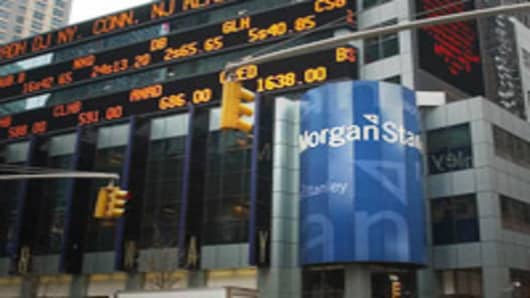James Gorman, Morgan Stanley’s chief executive, has been in discussions with Moody’s in an attempt to maintain its credit ratings and stave off a downgrade that could diminish the bank’s ability to buy the rest of Citigroup brokerage Smith Barney, according to people familiar with the matter.
Morgan Stanley owns 51 percent of Smith Barney, and holds an option, which kicks in at the end of May, to increase its stake to 65 percent. Taking full control of the brokerage is a centrepiece of Mr Gorman’s strategy. Morgan Stanley declined to comment.
People familiar with the bank’s thinking have said Morgan Stanley could consider buying all of Smith Barney outright, but its ultimate decision will depend on price. Analysts have valued Citi’s remaining Smith Barney stake at around $10 billion.
Morgan Stanley would most likely have to issue debt to fund the purchase, people say. That would become more expensive if Morgan Stanley is downgraded. Moody’s put Morgan Stanley, along with five other banks, on review for a downgrade in February. The bank could see its rating reduced by as many as three notches to Baa2 - two levels above junk status.
A downgrade would also force Morgan Stanley to provide additional collateral to back its vast derivatives business, where it acts as a counterparty.
Mr Gorman has been meeting Moody’s executives since earlier this year. The chief executive, who took over from John Mack at the beginning of 2010, is also thought to be discussing possible steps the bank could take to cushion the impact of a downgrade. These include shifting the banks’ derivatives books to a higher-rated subsidiary, which would help save it collateral costs. Other banks including Citigroup and Bank of America have done this.
Other major banks, such as JPMorgan and Goldman Sachs , are also on review for downgrade at Moody’s.
Morgan Stanley agreed to fold its retail brokerage business into a joint venture with Smith Barney in 2009. The venture is a key component of the bank’s push to become less dependent on volatile trading operations.
“[A downgrade] will make it more expensive [to issue debt] on the margin, but the overall cost of funding is not very expensive,” said one banker, who specializes in selling financials’ debt. Markets may be pricing in a higher cost of funding, he added.


